Guide to Organic Fertilizers: Perfect Choices for Every Garden
- February 8, 2024
- 0 comment
Explore the definitive guide to organic fertilizers for robust gardens and a healthier earth. Nourish soil and embrace sustainability with our expert tips. In an era where sustainability defines our choices, gardeners emerge as key players in an ecological revolution. The decision to employ organic fertilizers marks a profound commitment to eco-conscious cultivation.
These natural alternatives do more than just feed plants; they rejuvenate the earth, bolster life’s diversity, and reduce our ecological footprint. Delve into our in-depth guide and master the art of organic fertilization. Embrace the practices that let your garden flourish and contribute to the earth’s vitality.
Table of Contents
- The Fundamentals of Organic Fertilizers
- Comprehensive Overview of Organic Fertilizer Types
- Tailoring Organic Fertilizers to Your Garden’s Needs
- Best Practices in Organic Fertilizer Application
- DIY Organic Fertilizers: A Step-by-Step Guide
- Troubleshooting and Optimizing Fertilizer Use
- Conclusion
- FAQs
The Fundamentals of Organic Fertilizers
What Makes Fertilizers Organic
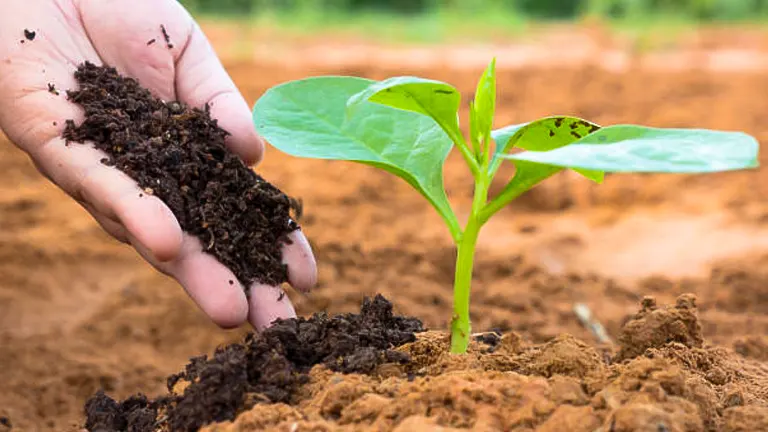
At its core, organic fertilizer is derived from natural sources, including plants, animals, and minerals. These materials undergo minimal processing, retaining their complex nutrient structures and beneficial microorganisms. Unlike synthetic fertilizers, which offer a quick fix of chemical nutrients, organic fertilizers release their nutrients slowly, matching the natural growth rhythm of plants. This slow-release mechanism ensures that plants receive a steady supply of nutrients, reducing the risk of over-fertilization and its associated harms.
Nutrient Profile and Soil Health
Organic fertilizers contribute to a rich, balanced nutrient profile that plants can access over time. They contain essential nutrients such as nitrogen (N), phosphorus (P), and potassium (K), often referred to as NPK, in addition to a myriad of other elements crucial for plant health, including calcium, magnesium, and sulfur. Beyond feeding plants, organic fertilizers enhance soil structure, increase water retention, and encourage the proliferation of beneficial microorganisms. Healthy soil teems with life and forms the foundation of a vibrant garden.
Environmental Impact
The environmental benefits of organic fertilizers extend far beyond the immediate vicinity of your garden. By avoiding synthetic chemicals, we reduce water pollution, prevent nutrient runoff, and decrease the risk of harming beneficial insects and wildlife. Organic fertilizers also contribute to carbon sequestration, capturing carbon dioxide from the atmosphere and storing it in the soil. This process plays a small but significant role in combating climate change, making the choice of organic fertilizers an act of stewardship towards our planet.
Comprehensive Overview of Organic Fertilizer Types
Animal-based Fertilizers

Animal-based fertilizers, derived from the by-products of animals, are a powerhouse of nutrients. Manure, for instance, is a traditional favorite, offering a balanced mix of NPK and improving soil structure. However, it’s important to use well-composted manure to avoid pathogens. Bone meal is rich in phosphorus, ideal for promoting strong root development, while fish emulsion, a liquid fertilizer, provides a quick nitrogen boost. Each of these options not only feeds the plants but also enriches the soil with organic matter, enhancing its fertility over time.
- Manure (Composted): A staple in organic gardening, composted manure is an all-rounder, providing a balanced nutrient profile. The composting process is vital to eliminate pathogens and reduce the potential for nutrient leaching. It also contributes to soil organic matter, improving soil structure and water retention.
- Bone Meal: Primarily composed of calcium and phosphorus, bone meal is a slow-release fertilizer that supports root development and flowering. It’s particularly beneficial for root crops and bulbs due to its phosphorus content.
- Fish Emulsion: A fast-acting, liquid-based fertilizer rich in nitrogen, fish emulsion is ideal for leafy growth and overall plant vigor. It also contains trace elements beneficial for plant health, such as sulfur, calcium, and magnesium.
Nutrient Composition and Effects of Animal-based Organic Fertilizers
| Fertilizer Type | NPK Ratio (Approx.) | Key Nutrients | Soil Impact | Plant Impact |
|---|---|---|---|---|
| Composted Manure | 1-1-1 | N, P, K, Organic Matter | Enhances soil structure, Increases microbial activity | Promotes balanced growth, Improves resilience |
| Bone Meal | 3-15-0 | P, Calcium | Increases phosphorus availability, Slow nutrient release | Supports root development, Enhances flowering and fruiting |
| Fish Emulsion | 5-1-1 | N, Trace Elements | Improves soil nutrient content, Quick nutrient availability | Stimulates rapid leafy growth, Boosts overall plant healt |
Context:
- NPK Ratio: Represents the percentage by weight of nitrogen (N), phosphorus (P), and potassium (K) in fertilizers. A balanced NPK ratio is crucial for meeting different plant growth stages’ nutritional needs.
- Key Nutrients: Beyond NPK, organic fertilizers offer a suite of micronutrients (e.g., calcium, magnesium, sulfur) essential for plant processes, including enzyme function, photosynthesis, and disease resistance.
- Soil Impact: The contribution of organic fertilizers to soil health is multifaceted, affecting physical structure, chemical balance, and biological activity. For instance, the addition of organic matter from manure improves soil aggregation, enhancing pore space for air and water movement.
- Plant Impact: The direct benefits to plants range from growth stimulation (e.g., nitrogen in fish emulsion promoting vegetative growth) to developmental support (e.g., phosphorus in bone meal supporting root and flower development).
Additional Insights:
Animal-based organic fertilizers—composted manure, bone meal, and fish emulsion—serve as cornerstone supplements in organic gardening, offering a rich spectrum of nutrients. Composted manure enhances soil structure and fosters a balanced growth environment, bone meal provides critical support for root and bloom development through its high phosphorus and calcium content, and fish emulsion delivers a quick nitrogen boost for lush vegetative growth. Collectively, these fertilizers enrich the soil, promote healthy plant growth, and contribute to a sustainable gardening ecosystem, showcasing their indispensable roles in nurturing both the soil and the plants it supports.
Plant-based Fertilizers

Plant-derived fertilizers offer a sustainable and vegan-friendly approach to gardening. These fertilizers are derived from decomposed plant material and other plant-based sources, providing essential nutrients that promote soil health and plant growth.
- Compost: The cornerstone of plant-based fertilization, compost is produced through the aerobic decomposition of garden and kitchen waste. It enriches the soil with organic matter, improving soil structure and fertility.
- Cottonseed Meal: A byproduct of the cotton industry, cottonseed meal is a slow-release fertilizer, high in nitrogen and ideal for acid-loving plants, providing a gentle, sustained nutrient supply.
- Seaweed: Available in both meal and liquid forms, seaweed is a rich source of trace elements and natural growth stimulants, boosting plant health and resilience against stress.
Nutrient Composition and Effects of Plant-based Organic Fertilizers
| Fertilizer Type | NPK Ratio (Approx.) | Key Nutrients | Soil Impact | Plant Impact |
|---|---|---|---|---|
| Compost | Variable | N, P, K, Organic Matter | Improves soil structure, Enhances microbial diversity | Promotes healthy growth, Increases disease resistance |
| Cottonseed Meal | 6-2-1 | N, P, K | Acidifies soil, Slow nutrient release | Ideal for acid-loving plants, Supports vegetative growth |
| Seaweed | 1-0.1-2 | Trace Elements, Growth Hormones | Stimulates soil biological activity | Enhances root development, Improves stress resilience |
Context:
- NPK Ratio: The nutrient composition in plant-based fertilizers can vary but is essential for addressing specific plant growth needs. Compost typically has a balanced but variable NPK ratio, making it versatile for general use. Cottonseed meal, with its higher nitrogen content, supports leafy growth, while seaweed provides potassium for root development and overall plant health.
- Key Nutrients: Beyond the primary nutrients, these fertilizers offer a range of beneficial compounds. Seaweed, for example, contains natural growth hormones like cytokinins and auxins, which stimulate plant growth and development.
- Soil Impact: Plant-based fertilizers contribute significantly to soil health. Compost, for instance, not only adds nutrients but also improves soil structure, water retention, and microbial diversity, creating a more robust and resilient growing environment.
- Plant Impact: The benefits of plant-based fertilizers extend directly to the plants. Cottonseed meal, being acidifying, is particularly beneficial for acid-loving plants, ensuring they thrive. Seaweed’s trace elements and growth hormones support robust growth and improved stress tolerance, making plants more resilient to environmental challenges.
Additional Insights:
Plant-based fertilizers like compost, cottonseed meal, and seaweed play pivotal roles in organic gardening by providing a diverse array of nutrients and enhancing soil health. Each type brings unique benefits tailored to different gardening needs, from general soil improvement and nutrient supply with compost to targeted support for acid-loving plants with cottonseed meal and enhanced growth and stress resilience with seaweed. These fertilizers underscore the importance of sustainable practices in gardening, offering effective, eco-friendly alternatives to synthetic fertilizers.
Mineral-based Fertilizers
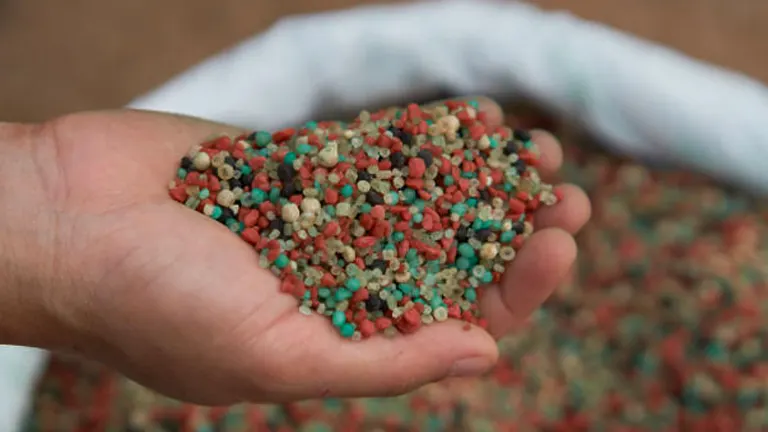
Mineral-based fertilizers are derived directly from the earth, offering a sustainable and vegan-friendly option for gardeners. These fertilizers provide essential nutrients that are often missing from the soil, improving plant health and soil quality without relying on animal products.
- Rock Phosphate: A prime source of phosphorus, rock phosphate is crucial for the development of flowers and fruits. It releases phosphorus slowly, ensuring a long-term supply for plant roots.
- Green Sand: Known for its rich content of iron, potassium, and other trace minerals, green sand is a slow-release fertilizer that improves soil structure and moisture retention. It’s particularly beneficial in loosening compacted soils and enhancing nutrient availability.
Nutrient Composition and Effects of Mineral-based Organic Fertilizers
| Fertilizer Type | NPK Ratio (Approx.) | Key Nutrients | Soil Impact | Plant Impact |
|---|---|---|---|---|
| Rock Phosphate | 0-3-0 | Phosphorus | Increases phosphorus availability, Enhances root development | Supports flowering and fruiting, Vital for seed formation |
| Green Sand | 0-0-1.5 | Potassium, Iron, Trace Minerals | Loosens compacted soil, Improves water retention | Enhances overall plant health, Boosts resistance to diseases |
Context:
- NPK Ratio: While not providing a balanced NPK ratio, mineral-based fertilizers target specific nutritional gaps in the soil, offering critical nutrients like phosphorus and potassium that are essential for plant development and stress resilience.
- Key Nutrients: Beyond their primary nutrient content, these fertilizers contribute a range of trace elements vital for plant growth, including iron from green sand, which plays a crucial role in chlorophyll synthesis and oxygen transport within the plant.
- Soil Impact: Mineral-based fertilizers not only supply essential nutrients but also improve the physical properties of the soil. For example, green sand can alleviate soil compaction, promoting better root penetration and water infiltration.
- Plant Impact: The direct benefits to plants include enhanced growth phases such as flowering and fruiting with rock phosphate and improved overall health and disease resistance with green sand, thanks to the broad spectrum of minerals and trace elements they supply.
Additional Insights:
Mineral-based fertilizers like rock phosphate and green sand play critical roles in organic gardening by addressing specific nutrient deficiencies and improving soil conditions. They offer gardeners a sustainable way to enhance plant development, from root growth to flowering and fruiting, while supporting soil health and ecosystem balance. This focus on targeted nutrition and environmental sustainability makes mineral-based fertilizers an invaluable component of a comprehensive organic fertilization strategy.
Tailoring Organic Fertilizers to Your Garden’s Needs
Soil Testing and Analysis
Before adding any fertilizer, it’s crucial to understand your soil’s current condition. A simple soil test can reveal pH levels and nutrient imbalances, guiding your fertilizer choices. For example, if your soil is nitrogen-deficient, choosing a high-nitrogen animal or plant-based fertilizer can address this issue.
Matching Fertilizers to Plant Requirements
Different plants have varied nutrient needs. Leafy greens may thrive with a nitrogen-rich fertilizer, whereas flowering plants might benefit more from phosphorus. Understanding these needs allows you to tailor your fertilizer application, ensuring each plant receives the nutrients it requires for optimal growth.
Climate and Seasonal Considerations
The effectiveness of organic fertilizers can vary with climate and season. In cooler climates, slower-acting fertilizers like rock phosphate are ideal, as they will release nutrients gradually, in sync with plant growth rates. Conversely, in warmer, more active growing seasons, quicker-acting fertilizers like fish emulsion can provide an immediate nutrient boost.
Best Practices in Organic Fertilizer Application
Application Techniques
Proper application of organic fertilizers is as crucial as choosing the right type. The technique used can greatly influence the effectiveness of the fertilizer, impacting plant health and growth. Here are some refined strategies and additional methods to consider:
List of Application Techniques:
Broadcasting: Evenly spreading fertilizer over a large area.
- Best For: General soil improvement and pre-planting soil preparation.
- Tips: Integrate the fertilizer into the topsoil with a rake or hoe to ensure it reaches the root zone of plants.
Side-Dressing: Applying fertilizer in a narrow band or circle around individual plants or alongside rows.
- Best For: Providing a nutrient boost to growing plants, especially heavy feeders, mid-season.
- Tips: Keep the fertilizer a few inches away from plant stems to avoid root burn and cover lightly with soil to prevent nutrient runoff.
Foliar Feeding: Spraying a diluted liquid fertilizer solution directly onto plant leaves.
- Best For: Addressing immediate nutrient deficiencies or giving plants a quick boost.
- Tips: Apply in the early morning or late afternoon to avoid leaf burn and ensure the foliage is dry before nightfall to prevent fungal diseases.
Spot Application: Directly applying fertilizer to specific areas where plants are growing, rather than the entire garden.
- Best For: Container gardens, potted plants, or very targeted nutrient supplementation.
- Tips: Use sparingly to avoid over-concentration of nutrients in a small area, which can harm plant roots.
Drip Line Application: Description: Placing fertilizer at the drip line of plants, where the tips of the branches reach, to match the spread of the root system.
- Best For: Trees and large shrubs to ensure nutrients are accessible to the roots.
- Tips: This method encourages roots to grow outward, enhancing stability and nutrient uptake efficiency.
Timing and Frequency
Timing is everything with organic fertilizers. Early spring applications can give plants a strong start, while additional feeding during peak growth periods can support sustained health. Avoid late-season fertilization, which can stimulate new growth too close to frost.
Safety and Efficiency Tips
Always follow label instructions to avoid over-application, which can harm plants and the environment. Store organic fertilizers properly to maintain their effectiveness and ensure safety. Here’s a list of tips to help you apply organic fertilizers safely and effectively:
- Wear Protective Gear: Applying certain organic fertilizers, especially those in powdered form or as concentrates, can irritate the skin, eyes, or respiratory system. Wearing gloves, masks, and protective eyewear can prevent irritation and ensure safe handling.
- Follow Label Instructions: Even organic fertilizers can harm plants if used excessively. Adhering to the recommended application rates and methods minimizes the risk of nutrient burn and environmental runoff, protecting plant health and local waterways.
- Store Fertilizers Properly: Organic fertilizers should be stored in a cool, dry place away from direct sunlight and moisture to maintain their efficacy. Proper storage also prevents attracting pests or producing unpleasant odors.
- Apply at the Right Time: Fertilizing during early morning or late afternoon avoids the evaporation that can occur in the heat of the day, ensuring that plants have adequate time to absorb the nutrients. Additionally, avoid applying before heavy rain to prevent nutrient runoff.
- Use Well-Composted Manure: Uncomposted or fresh manure can contain pathogens harmful to human health and can burn plants due to high nitrogen content. Well-composted manure is safer, as the composting process kills pathogens and stabilizes nutrient levels.
- Incorporate Into the Soil When Possible: Mixing fertilizers into the top few inches of soil can prevent nutrient loss to wind and water runoff, and facilitates nutrient uptake by plant roots. This practice is especially important in areas prone to erosion or heavy rainfall.
- Water After Application: Light watering after applying granular or solid organic fertilizers helps to dissolve nutrients and carry them into the soil, making them more readily available to plant roots. However, avoid over-watering, which can leach nutrients away from the root zone.
- Monitor Plant Response: After fertilizing, observe plant health and growth. Signs of over-fertilization include leaf burn or yellowing. If such symptoms appear, reduce fertilizer use and consider leaching the soil with water to dilute excess nutrients.
- Maintain Application Records: Keeping track of what fertilizers have been applied, along with their quantities and dates, can help you adjust your fertilization strategy over time for better efficiency and can be crucial in diagnosing any issues with plant health.
- Choose the Right Fertilizer for the Plant Type: Different plants have unique nutrient needs. Selecting a fertilizer that matches these needs ensures that plants receive the appropriate balance of nutrients, promoting healthy growth without waste or environmental impact.
DIY Organic Fertilizers: A Step-by-Step Guide
1. Composting Essentials
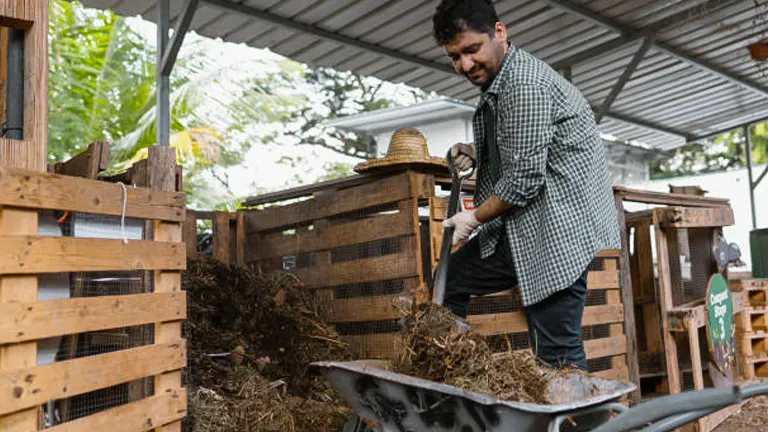
Composting is not just a method of recycling kitchen scraps and yard waste; it’s a foundation for sustainable gardening. By converting organic materials into rich soil amendments, composting supports plant health, soil structure, and environmental sustainability.
Step-by-Step Composting Guide:
- Choose Your Compost Bin: Select a bin or an area in your yard that can accommodate organic waste. Bins can be purchased or made from materials like wood pallets.
- Balance Your Greens and Browns: Your compost needs a balanced diet of ‘greens’ (nitrogen-rich materials like vegetable scraps, coffee grounds, and fresh grass clippings) and ‘browns’ (carbon-rich materials like dry leaves, straw, and cardboard). Aim for a ratio of about 3:1, browns to greens.
- Layer and Mix: Start with a layer of browns, then add a layer of greens. Add a thin layer of soil on top to introduce microorganisms. Continue layering and mix slightly. The soil layer is optional but can speed up the decomposition process.
- Maintain Moisture and Aeration: Keep your compost pile as moist as a wrung-out sponge. Turn it every few weeks to introduce air, which is essential for decomposition.
- Harvest Your Compost: In 3-6 months, your compost should be ready when it looks and smells like dark, rich soil. Use it to enrich garden beds, potting mixes, or as a top dressing for your plants.
2. Homemade Fertilizer Recipes

Creating specific fertilizers allows you to address the unique nutritional needs of your plants directly. Here are detailed recipes for homemade organic fertilizers.
Banana Peel Tea:
- Materials Needed: Banana peels, water, a jar or container.
- Steps:
- Fill your container with water and add banana peels.
- Let the mixture sit for 48 hours to steep.
- Remove the peels and use the water to irrigate your plants. This potassium-rich tea is excellent for promoting bloom in flowering plants.
Eggshell Powder:
- Materials Needed: Eggshells, an oven, and a grinder or mortar and pestle.
- Steps:
- Rinse your eggshells to remove any egg residue and let them dry.
- Bake the dry eggshells in an oven at 200°F for about 30 minutes to sterilize them.
- Grind the baked eggshells into a fine powder.
- Sprinkle the powder around the base of your plants to provide them with a calcium boost.
Coffee Ground Fertilizer:
- Materials Needed: Used coffee grounds.
- Steps:
- Collect used coffee grounds. You can dry them to prevent mold if not using immediately.
- Sprinkle the grounds directly onto the soil around your plants or mix them into the soil. Coffee grounds add nitrogen, improve soil texture, and enhance acidity for acid-loving plants.
3. Wood Ash Fertilizer
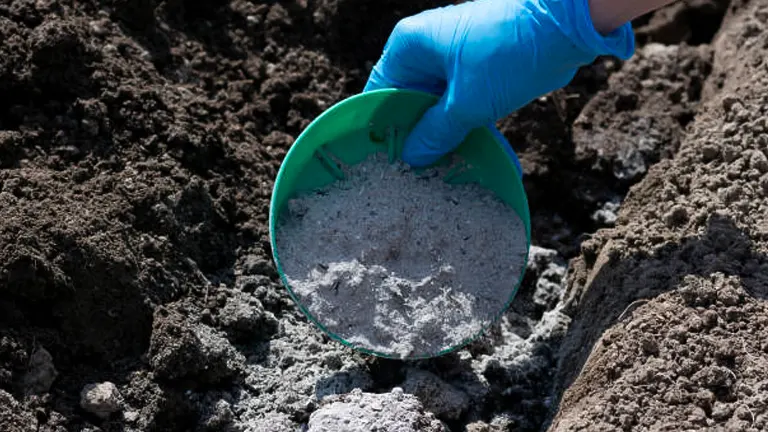
Wood ash from your fireplace can be an excellent source of potassium and calcium carbonate, which can help neutralize acidic soils.
- Materials Needed: Wood ash (ensure it’s from untreated wood), a container for storage.
- Steps:
- Collect wood ash in a metal container to avoid any fire hazard.
- Sift the ash to remove any large pieces or debris.
- Sprinkle the ash lightly around the base of your plants, or incorporate it into the compost pile to reduce its alkalinity. Use sparingly, as too much can raise the pH too high for some plants.
- Store remaining ash in a dry, sealed container to prevent it from getting wet.
Note: Avoid using ash around acid-loving plants like blueberries and azaleas.
4. Seaweed Fertilizer
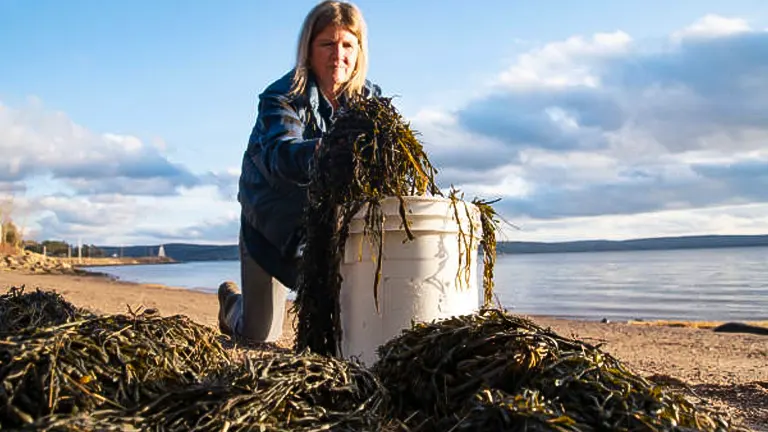
Seaweed is packed with trace elements and minerals that promote healthy plant growth and disease resistance.
- Materials Needed: Fresh or dried seaweed, a large bucket, water.
- Steps:
- If using fresh seaweed, rinse it well to remove salt. If dried, soak it in water to rehydrate.
- Fill a bucket with water and add the seaweed.
- Allow the mixture to steep for at least two weeks, stirring occasionally.
- Strain the liquid and dilute it with water until it’s the color of weak tea.
- Use this solution to water your plants or spray it on their foliage for a nutrient boost.
Note: Seaweed fertilizer is particularly beneficial for promoting strong root development and enhancing plant resilience against stress.
5. Worm Casting Tea

Worm castings (vermicompost) are rich in nutrients and beneficial microbes. Making worm casting tea is an effective way to provide a liquid nutrient boost to your plants.
- Materials Needed: Worm castings, a bucket, water, an old pillowcase or burlap bag (for steeping), an aquarium pump (optional for aeration).
- Steps:
- Fill the pillowcase or burlap bag with worm castings and tie it closed.
- Place the bag in a bucket filled with water. If you have an aquarium pump, use it to aerate the water, which will encourage beneficial bacterial growth.
- Let the mixture steep for 24-48 hours, stirring occasionally.
- Remove the bag of castings (which can be reused in your garden or compost bin) and use the tea to water your plants or as a foliar spray.
This nutrient-rich tea supports plant growth and increases soil microbial activity, promoting a healthy garden ecosystem.
6. Green Tea Fertilizer
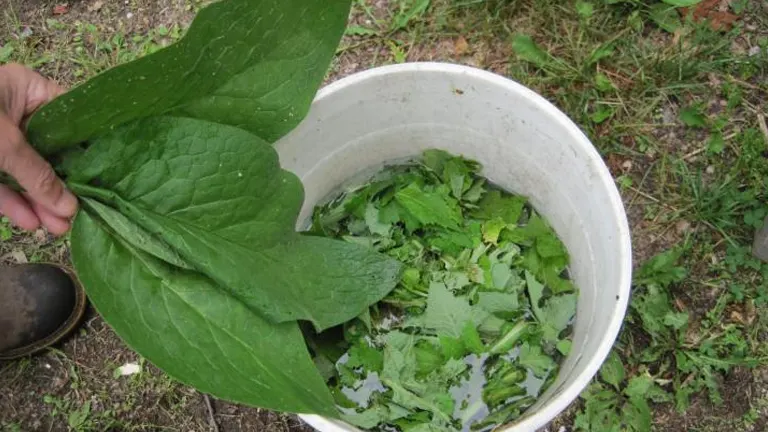
Surprisingly, ordinary green tea can be a mild but beneficial fertilizer, providing plants with essential nutrients.
- Materials Needed: Green tea bags or loose-leaf green tea, water.
- Steps:
- Brew a weak green tea solution (about one tea bag or a teaspoon of loose-leaf tea per gallon of water).
- Allow the tea to cool completely.
- Use the tea to water plants, soaking the soil around the base. This gentle fertilizer is great for houseplants and can be used once a month.
Green tea can slightly increase the acidity of the soil, making it suitable for acid-loving plants while providing a modest nutrient boost.
By incorporating these diverse DIY organic fertilizer methods, gardeners can utilize a wide range of natural materials to enrich their soil and support plant health. Each method offers unique benefits, allowing for customization based on specific garden needs and environmental considerations.
Quality Control and Storage
Ensuring the effectiveness and safety of your DIY fertilizers is crucial. Use only organic materials free from pesticides or contaminants. Store your prepared fertilizers in airtight containers in a cool, dry place to maintain their potency and prevent spoilage.
Final Tips:
- Monitor Plant Response: Pay attention to how your plants respond to different fertilizers and adjust your applications as needed.
- Be Patient: Natural fertilizers often act more slowly than synthetic ones. Give your plants time to absorb the nutrients.
- Keep Learning: Experiment with different materials and combinations to discover what works best for your garden.
By following these steps and tips, you can create effective, environmentally-friendly fertilizers that cater specifically to the needs of your garden, ensuring your plants grow healthy and strong.
Troubleshooting and Optimizing Fertilizer Use
Common Challenges
Even with careful planning, issues can arise. If plants show signs of nutrient burn (yellowing leaves, stunted growth), you may have over-fertilized. On the other hand, slow growth or pale leaves could indicate nutrient deficiency. Adjust your fertilization strategy accordingly, and remember, more is not always better when it comes to fertilizing.
Adjusting Practices for Problem Solving
Adapt your fertilization practices based on plant feedback. For nutrient burn, water thoroughly to help flush out excess nutrients. For deficiencies, consider a soil test to identify specific lacks and address them with targeted organic amendments.
Advanced Techniques
For gardeners ready to take their organic practices further, explore advanced techniques like vermiculture (worm composting) and biochar. Vermiculture produces worm castings, a nutrient-rich amendment, while biochar enhances soil structure and nutrient retention. Both methods support sustainable gardening by reducing waste and improving soil health.
Conclusion
Organic fertilizers offer a multitude of benefits for your garden, from improving soil health to supporting a more sustainable ecosystem. By choosing the right type of organic fertilizer, applying it correctly, and even making your own, you can support vibrant plant growth while respecting the planet. Remember, the best fertilizer is the one that meets the unique needs of your garden’s soil and plants. Experiment, observe, and adjust your practices as you learn what works best for your little slice of Earth.
FAQs
- What makes organic fertilizers different from synthetic ones?
Organic fertilizers are made from natural sources and release nutrients slowly, improving soil health and structure over time, unlike synthetic fertilizers that can lead to nutrient leaching and soil degradation. - Can I use organic fertilizers for all types of plants?
Yes, organic fertilizers are suitable for a wide variety of plants. The key is to choose the right type of fertilizer that matches the specific nutritional needs of your plants. - How often should I apply organic fertilizers?
The application frequency depends on the type of organic fertilizer used and the specific needs of your plants. It’s important to follow the recommendations on the product label and consider the growth stage of your plants. - Are organic fertilizers better for the environment?
Yes, organic fertilizers are considered more environmentally friendly because they are derived from natural sources, reduce chemical runoff, and support soil biodiversity. - Can I make my own organic fertilizer at home?
Absolutely! Many gardeners create their own compost or compost tea, which are excellent organic fertilizers, using kitchen scraps and yard waste. - Do organic fertilizers work as quickly as synthetic ones?
Organic fertilizers generally release nutrients more slowly than synthetic fertilizers. This slow release provides steady, long-term nourishment to plants but may not give the immediate boost that synthetic fertilizers offer. - How do I choose the right organic fertilizer for my garden?
Consider your plants’ specific nutrient needs, the soil’s current nutrient levels (which can be determined by a soil test), and the fertilizer’s NPK ratio. Selecting a fertilizer that aligns with these factors will ensure optimal plant health and growth. - Can using organic fertilizers improve soil health?
Yes, using organic fertilizers can significantly improve soil health by adding organic matter, enhancing soil structure, increasing water retention, and encouraging beneficial microbial activity in the soil.
In navigating the world of gardening, choosing organic fertilizers is a step toward cultivating a vibrant, sustainable garden. This guide has equipped you with the knowledge to select the perfect organic options for every plant in your garden. Embrace these natural solutions to nourish your soil, support plant health, and contribute to a healthier ecosystem. Happy gardening!

Benjamin Brooks
Forestry AuthorGreetings! I'm Benjamin Brooks, and my journey over the past 15 years has revolved around the fascinating realms of content creation, expertise in snow clearing, and the intricate world of lumberjacking and landscaping. What began as a simple curiosity about the natural world and heavy machinery has evolved into a passionate profession where my love for crafting words intertwines seamlessly with my lumberjacking and garden skills.



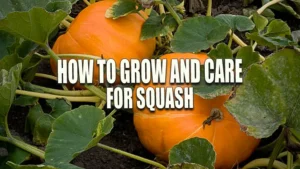



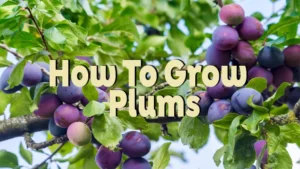


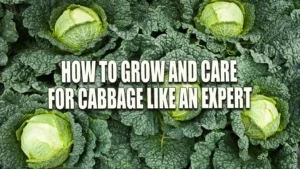


Leave your comment